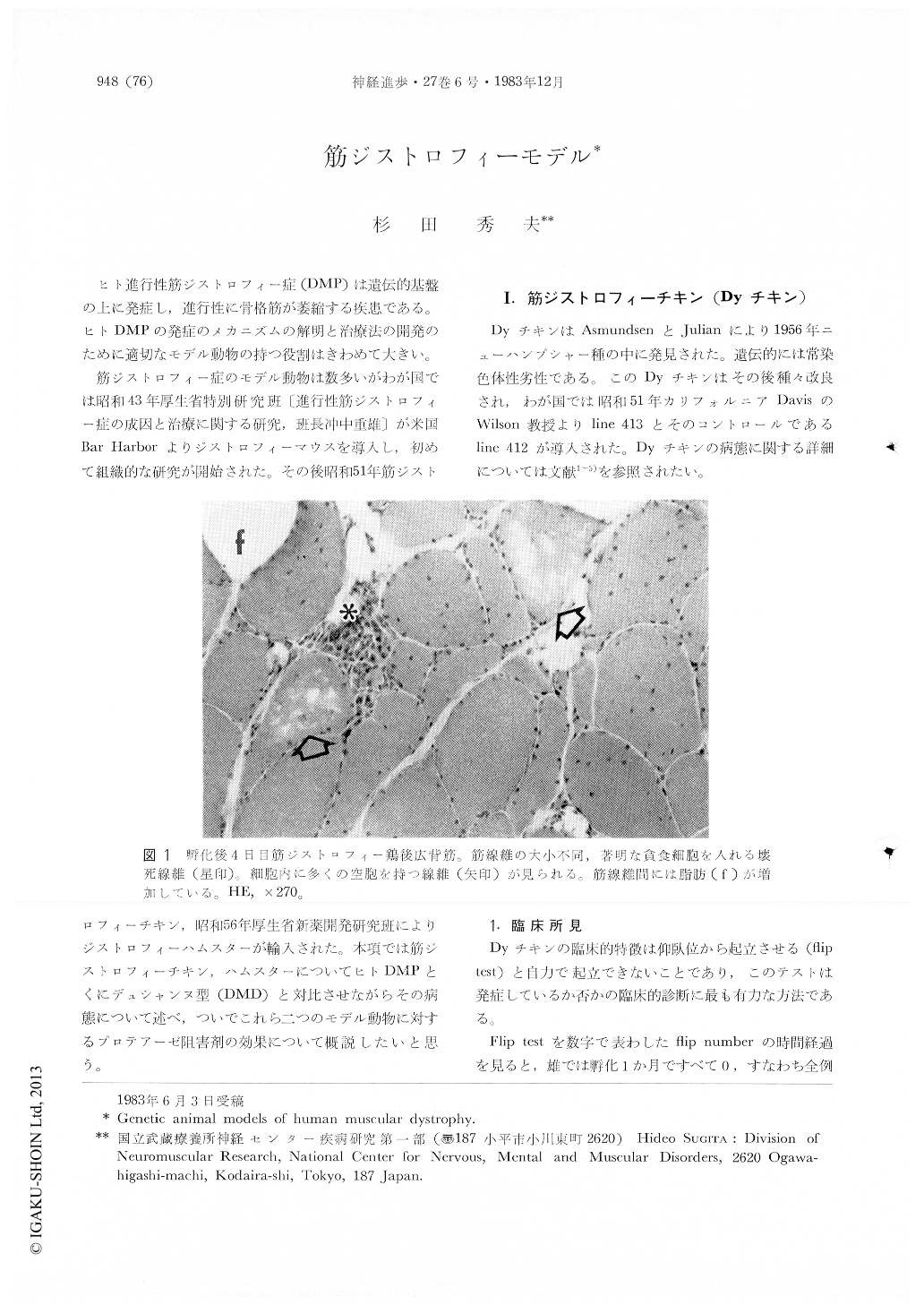Japanese
English
- 有料閲覧
- Abstract 文献概要
- 1ページ目 Look Inside
ヒト進行性筋ジストロフィー症(DMP)は遺伝的基盤の上に発症し,進行性に骨格筋が萎縮する疾患である。ヒトDMPの発症のメカニズムの解明と治療法の開発のために適切なモデル動物の持つ役割はきわめて大きい。
筋ジストロフィー症のモデル動物は数多いがわが国では昭和43年厚生省特別研究班〔進行性筋ジストロフィー症の成因と治療に関する研究,班長沖中重雄〕が米国Bar Harborよりジストロフィーマウスを導入し,初めて組織的な研究が開始された。その後昭和51年筋ジストロフィーチキン,昭和56年厚生省新薬開発研究班によりジストロフィーハムスターが輸入された。本稿では筋ジストロフィーチキン,ハムスターについてヒトDMPとくにデュシャンヌ型(DMD)と対比させながらその病態について述べ,ついでこれら二つのモデル動物に対するプロテアーゼ阻害剤の効果について概説したいと思う。
Abstract
Since the inherited forms of muscular dystrophy were first described in the mouse and chicken more than 20 years ago, many different kinds of genetic animal models were reported in the liter-ature.
Perhaps no animal model can be expected to be identical in every respect to human muscular dystrophy, but each animal model has features that are common in particular aspects of muscle pathology.
In this review, the morphological and bio-chemical aspects of dystrophic chicken line 413 and hamster dystrophy UM-X 7. 1 were reported in comparison with those of Duchenne muscular dystrophy (DMD).

Copyright © 1983, Igaku-Shoin Ltd. All rights reserved.


